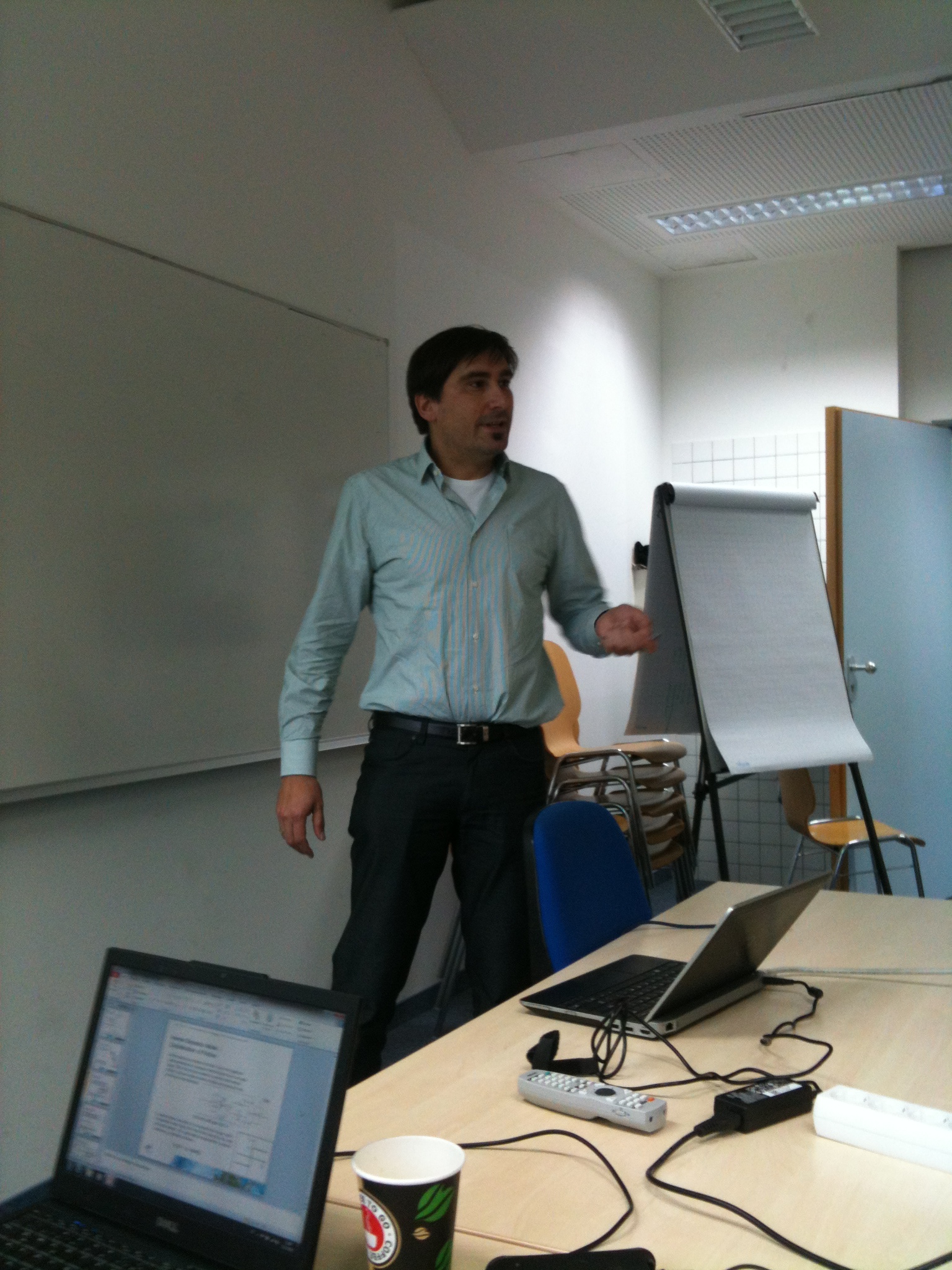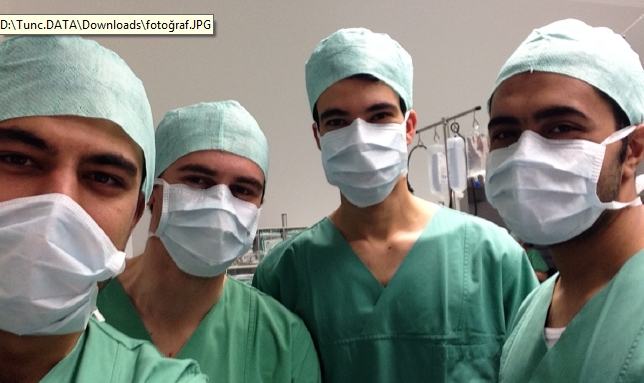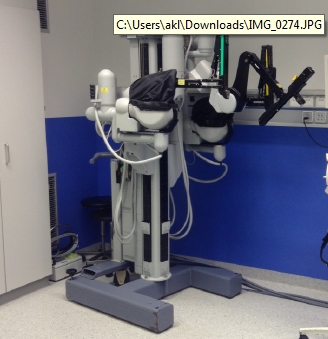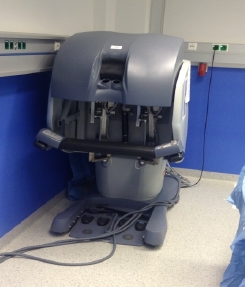The lecture includes:
- Block 1 - Introduction
- Part 1 - Organizational Matter (Rainer Konietschke) - 45 min: You will get a short preview of the lecture. We will form groups of 3-4 students for the assignments and operation room visits. You will get the surgeon contacts to schedule your OR visits. The assignments will be presented, and the first assignment (work with MATLAB/Simulink) is delegated to you.
- Part 2 - Introduction to surgical robotics (Rainer Konietschke) - 120 min: This lecture will, based on the current state of the art surgical robotics, identify and classify various potentials of robotics in the OR. After this lecture, you will have an idea of the opportunities and challenges in surgical robotics and get a starting point for your contribution in this field.
- Part 3 - User-centered development and evaluation of human-machine interfaces (Bernhard Weber) - 45 min: The lecture consists of mainly two parts: (1) a general introduction to human factors methods and (2) an example of applying these methods in the field of robot-assisted minimally invasive surgery. In Part 1, methods of developing, improving and evaluating novel concepts of human-machine interfaces will be reviewed. It will be described how to involve end users in each stage of the product cycle, to determine user requirements as well as limitations and to evaluate concepts or systems accordingly. Besides qualitative methods like systematic field observations, semi-structured interviews, hierarchical task analyses and prototype testing, quantitative experimental methods like part-task or full scale simulations will be presented. In Part 2, the practical application of the user-centered approach will be illustrated by the example of DLR’s surgical robot MIRO for minimally invasive surgery.
- Block 2 - Surgical Techniques (Bernhard Kübler) - 210 min: You will learn about the general course of action and processes in ORs, technical basics of endoscopes (flexible endoscopes as well as minimally invasive surgery), and examples of application. Furthermore, basics of sterilization technology (gas, low-temperature plasma, heat, radiation) and notes on design of MIS instruments as well as current trends in surgery (single port surgery, NOTES etc.) will be presented.
- Block 3 - Kinematics
- Part 1 - Midterm presentations (You) - 30 min
- Part 2 - Kinematics (Christopher Schlenk) - 70 min: After a short repetition of rigid body transformation matrices, alternative ways to represent rotations such as Euler- and Kardan-angles, “angle and axis” representation, and unit quaternions will be introduced. Subsequently, the Denavit-Hartenberg convention to describe robot kinematics will be explained. Then, the calculation of the direct and inverse kinematics and of the Jacobi matrix of a robot is derived. Finally, you will learn how to calibrate a tool to the robot coordinate system.
- Part 3 - Kinematics exercises (Christopher Schlenk, Julian Klodmann) - 70 min: At the beginning of this exercise, you will identify the Denavit-Hartenberg parameters of a robotic arm. Using these information, you will investigate the direct and inverse kinematics of this robot in MATLAB/Simulink and plot its workspace.
- Block 4 - Sensors and Actuators
- Part 1 - Midterm presentations (You) - 30 min
- Part 2 - Sensors and Actuators (Robert Haslinger, Patrick Leyendecker, Alex Nothhelfer, Ruben Bärenweiler) - 180 min: The lecture consists of two parts: The first part gives an overview about actuators used in robotics. The second part includes an overview about possible sensor types used in robotics as well as fundamentals about physical measurement technologies. Then, a short exercise is presented in class. The last part presents an overview to actuators for robotics.
- Block 5 - Dynamics and Robot Operating Software
- Part 1 - Midterm presentations (You) - 30 min
- Part 2 - Dynamics lecture (Julian Klodmann) - 90 min: The dynamics modeling of robot manipulators is essential for mechanical design, control and simulation of robotic systems. Understanding the dynamics of a robotic system enables to evaluate its capabilities and limitations to perform a certain task. Beginning with the dynamics of a first order mass-spring-damper system, you will form the dynamic equations of motion of robot manipulators. Different algorithms to derive the robot dynamics are summarized.
- Part 3 – Introduction to Robot Control Architectures (Stefan Jörg) – 45 min: In this lecture you will learn about the basic concepts of robot control architectures. The control modes autonomous, shared control, and telepresence will be explained.
- Part 4 – Introduction to Robot Operating Architecture (Stefan Jörg) – 75 min: You will learn about the robot operating part of the robot system, the controller hardware and software which implements the robot's user interface. Different types of user interfaces are explained. The fundamental tasks and components of the operating architecture are explained. Based on this, you will learn about the complexity of such an architecture.
- Block 6 - Control
- Part 1 - Final presentations (You) - 60 min
- Part 2 - Control I (Andreas Tobergte, Rainer Konietschke) 90 min: You will learn about basic concepts in control like linear control, laplace transformation, transfer functions, state space formulation, pid controller, state control.
- Part 3 - Exercises (Andreas Tobergte, Rainer Konietschke) 30 min: You will do some exercises using MATLAB/Simulink.
- Part 4 - Control II (Andreas Tobergte, Rainer Konietschke) 30 min: In this lecture you will get an introduction to passivity-based robot control.
- Block 7 - Image-guided control
- Part 1 - Final presentations (You) - 30 min
- Part 2 - Image-guided control (Florian Fröhlich) - 60 min: This lecture shortly introduces some commonly used methods of medical imaging. Following, the requirements of image based control are discussed. The use of a camera, especially an endoscopic stereo camera, as sensor for tracking and modeling is presented. Finally, two closed loop applications are shown: optical tracking of input devices and artery detection based on Doppler-Ultrasound.
- Part 3 - Tracking of natural and artificial landmarks (Martin Gröger) - 30 min: Motion tracking in medical images will be presented based on endoscopic image data. Methods for detecting landmarks for tracking will be shown and motion tracking strategies will be explained.
- Part 4 - Final exam (You) - 60 min
- Part 5 - Wrap-up (All) - 30 min
We will have about 30 min of breaks in each block, arranged by the lecturers.
Lecture Schedule
Readings
- Jacob Rosen; Blake Hannaford; Richard M. Satava (Eds.) (2011) Surgical Robotics – Systems Applications and Visions, Springer, ISBN 978-1-4419-1125-4
- John J. Craig. 1989. Introduction to Robotics: Mechanics and Control (2nd ed.). Addison-Wesley Longman Publishing Co., Inc., Boston, MA, USA.
- Hagn, U., Nickl, M., Jörg, S., Tobergte, A., Kübler, B., Passig, G., Gröger, M., Fröhlich, F., Seibold, U., Konietschke, R., Le-Tien, L., Albu-Schäffer, A., Grebenstein, M., Ortmaier, T. & Hirzinger, G. (2008) DLR MiroSurge – towards versatility in surgical robotics. 7. Jahrestagung der Deutschen Gesellschaft für Computer- und Roboterassistierte Chirurgie e.V. Proceedings of CURAC, 2008, pp. 143 – 146.
- Selected Workshop and Proceedings of the following congresses: ICRA, IROS, CARS, Curac
|







